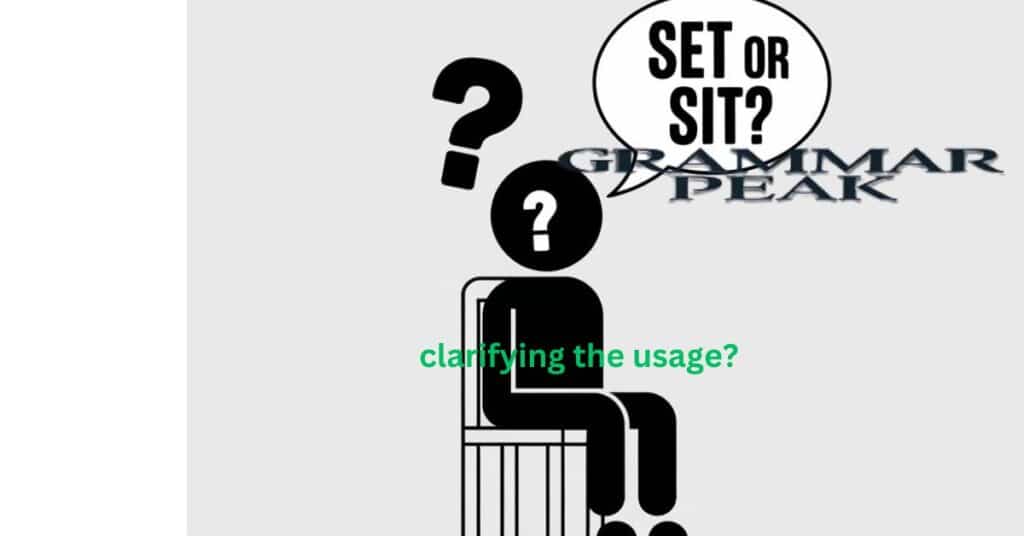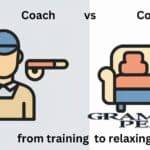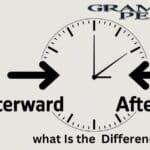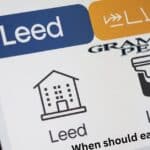Comprehending the meaning of the difference between the verbs “set” and “sit” can benefit everyone learning English. Most people confuse the two terms. Both are popular verbs, but their usage and meaning are distinct.
Today in our blog, we’re gonna take a close inspection at “set” and “sit.” We’re gonna discuss what they are, where they came from, and how we can use them appropriately. We’re also gonna involve some examples and a tense table for “set” and “sit.” At the end of it, you’re gonna fully understand when to use each word. Let’s get into the realm of these two action verbs!
What do Set and Sit Mean?
The words “set” and “sit” are both important in English.
Set:
The word “set” can function as a transitive verb. This means it requires an object to act upon. For example, you can set an alarm clock. Here, the clock is the object being acted upon. You are positioning it to ring at a specific time.
Another example is when you set your goals. You establish what you want to achieve. In this context, “set” indicates a deliberate act of organization. In addition, “set” can describe the act of arranging items. When you organize your books on a shelf, you are setting them in order. This action conveys intention and effort.
Sit:
The verb “sit” is an intransitive verb. This means it does not require a direct object. When you sit, you perform the action without needing to act on something else. For example, you can say, “I sit at my desk.” Here, you are describing your position.
Another common usage is “sitting comfortably.” This means you are in a relaxed position. In this case, “sit” describes a state of rest. Additionally, “sit” can convey the idea of resting your weight on a surface. When you sit on a chair, you are allowing the chair to support you. This highlights the action of settling down.
You will like Set or Sit: When Should Each Be Used?
Origins of Set and Sit
Set:
The origins of set date back to Old English. The word comes from the Proto-Germanic term “satan,” which means to cause to sit. Over time, its meaning evolved to include arranging and placing items. This historical context helps explain why “set” is commonly used in various scenarios.
Sit:
Conversely, the origins of sit also trace back to Old English. It comes from the word “sittan,” meaning to remain or be in a position. This word has been used for centuries to describe the act of resting.
Both words have deep historical roots, which contribute to their meanings today. Understanding these origins gives you insight into how these verbs have developed in the English language.
A Simple Tense Table for Set and Sit
Tense Table for Set and Sit (Emphasizing Passive Voice)
| Tense | Set | Sit |
| Present Simple Passive | is/are set | is/are sat |
| Present Continuous Passive | is/are being set | is/are being sat |
| Present Perfect Passive | has/have been set | has/have been sat |
| Past Simple Passive | was/were set | was/were sat |
| Past Continuous Passive | was/were being set | was/were being sat |
| Past Perfect Passive | had been set | had been sat |
| Future Simple Passive | will be set | will be sat |
| Future Perfect Passive | will have been set | will have been sat |
Should You Use Set or Sit?
Choosing between “set” and “sit” can be tricky. One simple guideline is to remember that “set” involves action and placement. Use “set” when you are arranging or establishing something.
Set vs Sit
Related Comparison Table: Set vs. Sit (Contextual Aspects)
| Aspect | Set | Sit |
| Context | Often used in contexts involving organization or preparation | Commonly used in contexts involving rest or position |
| Synonyms | Arrange, establish, fix | Perch, recline, settle |
| Antonyms | Disarrange, unset, scatter | Stand, rise, get up |
| Tense Variations | Sets, setted (less common), setting | Sits, sat, sitting |
| Common Usage | Frequently used in business and planning contexts | Commonly used in everyday conversation |
| Related Phrases | “Set in motion,” “set the record straight” | “Sit tight,” “sit on the fence” |
| Grammatical Role | Can function as a transitive verb requiring an object | Functions as an intransitive verb |
| Idiomatic Expressions | “Set the stage,” “set your sights on” | “Sit back and relax,” “sit in judgment” |
You might be Set or Sit: When Should Each Be Used?
Examples in Context
Let’s explore some examples of set and examples of sit in context.
Set:
- I set my backpack on the floor next to my desk.
- He set the mood for the evening by dimming the lights.
- I set my goals for the week during my Sunday planning session.
- They set the chairs around the fire pit for the gathering.
- We set aside some time to discuss the project.
- They set a meeting for next Tuesday at 10 a.m.
- I set my phone down on the kitchen counter.
- The children sat quietly during the movie.
- She set a goal to read 20 books this year.
- We set the decorations up for the party last night.
- She set the timer for 30 minutes while cooking.
- They set up a new system for tracking progress.
Sit:
- She decided to sit on the grass during the picnic.
- He often sits in the library to study for his exams.
- They will sit together at the conference to discuss their project.
- I like to sit in a quiet corner when I read.
- The teacher asked the students to sit in a circle for the discussion.
- He prefers to sit at the back of the theater for a better view.
- She always sits with her legs crossed when she meditates.
- I will sit down with my family to plan our vacation.
- The dog loves to sit by the fireplace during winter.
- She will sit on the bench while waiting for the bus..
- I decided to sit out the last game to rest my ankle.
- He likes to sit in the sun with a good book on weekends.
FAQ” S
What is the main difference between “set” and “sit”?
“Set” is a transitive verb meaning to arrange or put something in a specific place, while “sit” is an intransitive verb meaning to rest on a surface.
Can “set” and “sit” be used in the same context?
No, they have different meanings. “Set” involves action, while “sit” describes a position.
How do you remember when to use “set” and “sit”?
Think of “set” as requiring an object and involving action, while “sit” is about being in a resting position.
What are some common phrases using “set”?
Examples include “set the table,” “set a goal,” and “set in stone.”
Can you give an example of “sit” in a sentence?
Sure! “I will sit on the bench to watch the game.”
Conclusion
Understanding when to use “set” and “sit” is essential for effective communication. Each word serves a unique purpose and conveys different meanings. By practicing their usage, you can enhance your language skills and express yourself more clearly. When you encounter situations requiring these verbs, remember their meanings and contexts. This will help you choose the correct word every time you speak or write.

Mason Blake is an experienced blogger with a passion for language and communication. With years of expertise in crafting informative and engaging content, Mason shares valuable insights on grammar and writing. His clear, concise, and reader-friendly approach has earned him a loyal following, helping readers sharpen their language skills and master the art of effective communication.








Thanks for sharing. I read many of your blog posts, cool, your blog is very good.
Your point of view caught my eye and was very interesting. Thanks. I have a question for you.
Thank you for your sharing. I am worried that I lack creative ideas. It is your article that makes me full of hope. Thank you. But, I have a question, can you help me?
Can you be more specific about the content of your article? After reading it, I still have some doubts. Hope you can help me.
Your point of view caught my eye and was very interesting. Thanks. I have a question for you. https://www.binance.com/join?ref=P9L9FQKY
Can you be more specific about the content of your article? After reading it, I still have some doubts. Hope you can help me. “oppna gate-konto
Thanks for sharing. I read many of your blog posts, cool, your blog is very good.
I don’t think the title of your enticle matches the content lol. Just kidding, mainly because I had some doubts after reading the enticle.
Your point of view caught my eye and was very interesting. Thanks. I have a question for you.
Thank you for offering such practical guidance.
This is exactly the kind of content I’ve been searching for.
Thanks for making this so reader-friendly.
Keep writing! Your content is always so helpful.
You really know how to connect with your readers.
This is exactly the kind of content I’ve been searching for.
I like how you kept it informative without being too technical.
Your writing always inspires me to learn more.
I appreciate the depth and clarity of this post.
I appreciate how genuine your writing feels. Thanks for sharing.
Your writing always inspires me to learn more.
What a great resource. I’ll be referring back to this often.
You write with so much clarity and confidence. Impressive!
You’ve clearly done your research, and it shows.
73zkox
I appreciate the honesty and openness in your writing.
I never thought about it that way before. Great insight!
This is now one of my favorite blog posts on this subject.
This was easy to follow, even for someone new like me.
Thanks for addressing this topic—it’s so important.
I’m definitely going to apply what I’ve learned here.
Great job simplifying something so complex.
This made me rethink some of my assumptions. Really valuable post.
This is now one of my favorite blog posts on this subject.
Thanks for sharing your knowledge. This added a lot of value to my day.
This post cleared up so many questions for me.
Such a refreshing take on a common topic.
This was a very informative post. I appreciate the time you took to write it.
I like how you presented both sides of the argument fairly.
vleksxyjpktlxkkvxezfxmmozgzjrz
I’ll definitely come back and read more of your content.
I love how well-organized and detailed this post is.
I appreciate the honesty and openness in your writing.
Great job simplifying something so complex.
Such a simple yet powerful message. Thanks for this.
Keep educating and inspiring others with posts like this.
This post cleared up so many questions for me.
Thank you for putting this in a way that anyone can understand.
Excellent work! Looking forward to future posts.
This was easy to follow, even for someone new like me.
Your writing style makes complex ideas so easy to digest.
This gave me a lot to think about. Thanks for sharing.
You explained it in such a relatable way. Well done!
I really appreciate content like this—it’s clear, informative, and actually helpful. Definitely worth reading!
I feel more confident tackling this now, thanks to you.
It’s refreshing to find something that feels honest and genuinely useful. Thanks for sharing your knowledge in such a clear way.
Thanks for making this easy to understand even without a background in it.
Very relevant and timely content. Appreciate you sharing this.
Your writing style makes complex ideas so easy to digest.
I hadn’t considered this angle before. It’s refreshing!
Turkey travel packages Fantastic Turkey tours! The blend of European and Asian cultures was unique and intriguing. http://www.tecnoac.com/?p=56090
Thanks for taking the time to break this down step-by-step.
Your thoughts are always so well-organized and presented.
rhbw4j
eak2vv